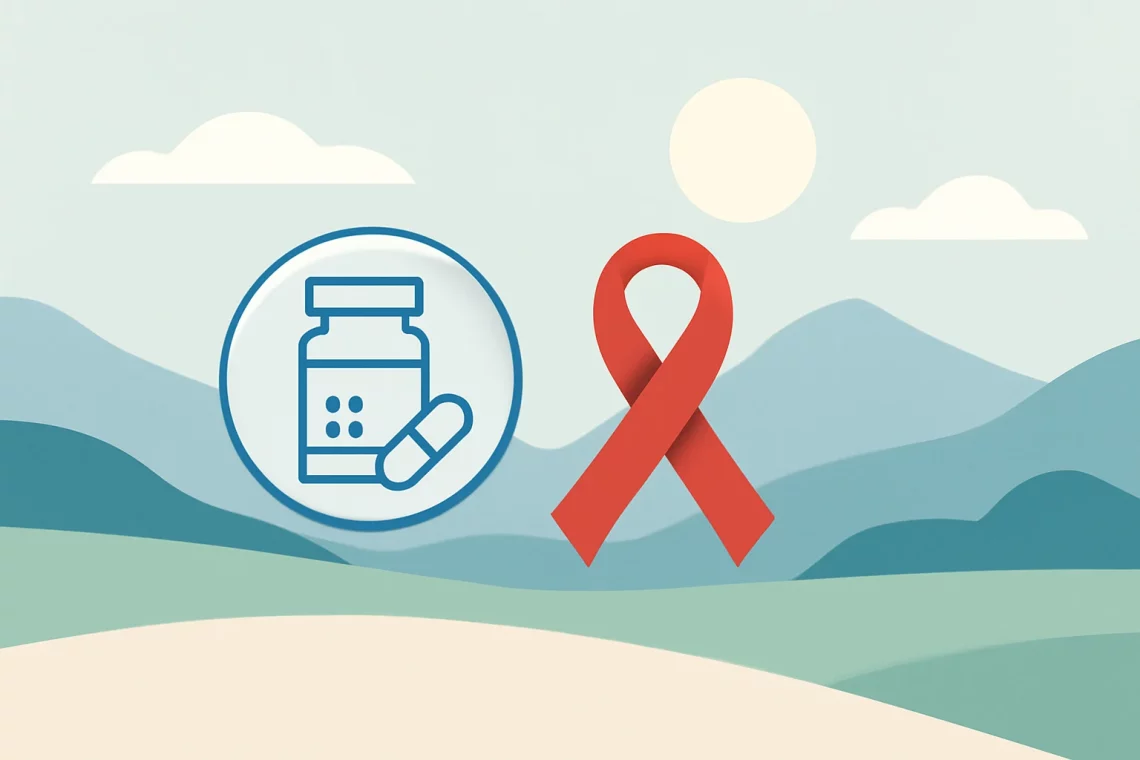
Biktarvy vs Juluca: A Comparative Analysis of HIV Treatment Options
The landscape of HIV treatment has evolved significantly over the years, with a growing emphasis on developing therapies that are not only effective but also convenient for patients. Among the various treatment options available today, Biktarvy and Juluca have emerged as popular choices. Both medications are designed to manage HIV effectively, but they come with different mechanisms of action, dosing regimens, and side effect profiles.
As patients and healthcare providers seek the best treatment options, understanding the nuances of these medications becomes crucial. The decision-making process involves considering factors such as efficacy, patient adherence, and potential drug interactions. In this context, patients often inquire about the differences and similarities between Biktarvy and Juluca, aiming to make informed choices that will help them lead healthier lives while managing their condition.
In this article, we will explore the characteristics of Biktarvy and Juluca, comparing their formulations, mechanisms of action, side effects, and overall effectiveness in the treatment of HIV. Through a detailed examination of these two medications, we aim to provide clarity to patients and caregivers navigating this complex landscape.
Understanding Biktarvy: Composition and Mechanism of Action
Biktarvy is a fixed-dose combination antiretroviral medication that contains three active ingredients: bictegravir, emtricitabine, and tenofovir alafenamide (TAF). This combination is designed to provide a comprehensive approach to HIV treatment by targeting the virus at multiple points in its life cycle.
Bictegravir is an integrase strand transfer inhibitor (INSTI), which works by blocking the integrase enzyme that HIV uses to integrate its genetic material into the host’s DNA. By inhibiting this process, bictegravir effectively reduces the viral load in the body.
Emtricitabine and tenofovir alafenamide are both nucleotide reverse transcriptase inhibitors (NRTIs). They prevent the reverse transcriptase enzyme from converting viral RNA into DNA, thereby limiting the replication of the virus. The inclusion of TAF is particularly noteworthy, as it is associated with a lower risk of kidney and bone toxicity compared to its predecessor, tenofovir disoproxil fumarate (TDF).
One of the key advantages of Biktarvy is its once-daily dosing regimen, which enhances adherence, as patients do not have to remember to take multiple pills throughout the day. Additionally, clinical trials have demonstrated that Biktarvy can achieve and maintain viral suppression in a significant percentage of patients, making it a preferred choice for many healthcare providers.
However, like any medication, Biktarvy is not without potential side effects. Commonly reported side effects include diarrhea, nausea, and headache, but these are generally mild and often resolve on their own. More serious side effects, although rare, may include liver problems and allergic reactions, necessitating careful monitoring by healthcare providers.
In summary, Biktarvy offers a robust option for HIV treatment with its combination of three potent antiretroviral agents and a convenient once-daily dosing schedule. Its effectiveness and safety profile make it a leading choice among many healthcare professionals.
Exploring Juluca: Unique Features and Benefits
Juluca is another fixed-dose combination medication for HIV treatment, which contains two active ingredients: dolutegravir and rilpivirine. Dolutegravir is also an integrase strand transfer inhibitor, similar to bictegravir, while rilpivirine is a non-nucleoside reverse transcriptase inhibitor (NNRTI). This dual-action approach allows Juluca to effectively suppress the virus while also offering a different class of medication that may be beneficial for certain patients.
One of the standout features of Juluca is its suitability for patients who have achieved viral suppression and are looking for a simplified treatment regimen. Unlike Biktarvy, which is often used as a first-line therapy, Juluca is primarily indicated for patients who are virologically suppressed on a stable antiretroviral regimen for at least six months. This makes it an attractive option for those seeking to reduce their pill burden.
Juluca is also taken once daily, which aligns with the trend toward simplified treatment options in HIV management. By reducing the number of medications a patient has to take, Juluca can enhance adherence and contribute to better overall health outcomes.
In terms of side effects, Juluca shares some commonalities with Biktarvy, including nausea and fatigue. However, some patients may experience specific side effects related to rilpivirine, such as depression or sleep disturbances. As with any medication, it is essential for patients to communicate with their healthcare providers about any adverse reactions they may experience.
The efficacy of Juluca has been highlighted in clinical trials, demonstrating its ability to maintain viral suppression in patients transitioning from other antiretroviral regimens. This evidence supports its role as a viable option for those seeking a more streamlined approach to HIV treatment.
In conclusion, Juluca provides a unique alternative for patients who are already virologically suppressed and wish to simplify their treatment. With its dual-action formulation and once-daily dosing, it can be an effective choice for long-term management of HIV.
Comparative Efficacy: Biktarvy vs. Juluca
When comparing the efficacy of Biktarvy and Juluca, it is essential to consider the patient population, treatment history, and specific health goals. Both medications have been shown to achieve and maintain viral suppression, but their indications and target demographics differ.
Biktarvy has been primarily studied in treatment-naive patients and those who are switching from other regimens. Clinical trials have demonstrated high rates of viral suppression, often exceeding 90% in treatment-naive populations. The three-drug combination allows for a robust response against HIV, making it a strong contender for first-line therapy.
On the other hand, Juluca is specifically designed for patients who have already achieved viral suppression. Its efficacy in maintaining this suppression has been well-documented, and studies indicate that it can be just as effective as traditional three-drug regimens in appropriate populations. The two-drug regimen may also provide a lower pill burden, which can be a significant factor in patient adherence and overall quality of life.
Another critical aspect to consider is the potential for drug interactions. Biktarvy, with its three components, may have a broader range of interactions compared to Juluca. Patients on multiple medications should discuss their full medication lists with their healthcare providers to assess any possible interactions.
In summary, while both Biktarvy and Juluca are effective in managing HIV, their appropriate use may depend on individual patient circumstances, treatment history, and specific health goals. Biktarvy may be better suited for those starting treatment, while Juluca offers a streamlined approach for patients who have already achieved viral suppression.
Side Effects and Considerations for Patients
Understanding the side effects and considerations associated with Biktarvy and Juluca is crucial for patients and healthcare providers alike. Both medications have been associated with a range of side effects, some of which may be more significant than others.
Biktarvy’s side effects typically include mild gastrointestinal symptoms, such as diarrhea and nausea, as well as headaches. While these side effects are generally manageable, patients should be aware that more serious adverse reactions, although rare, can occur. Monitoring liver function is essential, as some patients may experience liver-related issues while on this medication.
Juluca, in contrast, may present some unique side effects due to its components. While it shares common mild side effects with Biktarvy, patients may also experience mood changes or sleep disturbances, especially related to the rilpivirine component. This makes it vital for patients to communicate any significant changes in mood or sleep patterns to their healthcare providers.
Another consideration is the potential for drug interactions. Biktarvy’s three-drug formulation may lead to more interactions with other medications, which is particularly important for patients taking multiple drugs for coexisting conditions. Juluca, with its simplified two-drug regimen, may present fewer interaction concerns, but it is still essential for patients to disclose their entire medication list to their healthcare providers.
Ultimately, the choice between Biktarvy and Juluca should be made collaboratively between the patient and their healthcare team. Factors such as treatment history, potential side effects, adherence considerations, and individual patient preferences are all critical in determining the best course of action.
In conclusion, both Biktarvy and Juluca have unique benefits and potential drawbacks. A thorough understanding of these medications will empower patients to make informed decisions regarding their HIV treatment.
**Disclaimer:** This article is not intended as medical advice. Please consult with a healthcare professional for any health-related concerns or questions.




